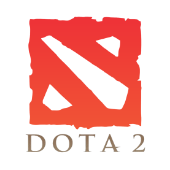

Dota 2
What is Dota 2?
Dota 2 is a multiplayer online battle arena (MOBA) game produced by Valve. It is a standalone game and follow up to Defense of the Ancients which is a modification for the Warcraft III game.
Dota 2 is a fantasy-style game consisting of two teams of five players. The teams occupy opposite ends of a map and compete to destroy each other’s bases. Players control characters known as ‘heroes’, who all have different abilities and can grow more powerful during the game. Dota 2 is complex and attracts gamers of all levels, including elite players who compete in global eSport tournaments for real prize money.
New players can learn how Dota 2 works and practice being different characters using the demo options. Players are also automatically matched according to experience level, to keep the game fair. Players can communicate in Dota 2 with preloaded text messages or voice chat, or choose to mute these features.
Website: store.steampowered.com/app/570/Dota_2/
Platform: Dota 2 is available on the online gaming platform, Steam.
Apps: Steam users can access the chat community and activate remote security functions on their account, using the Steam mobile app: Android, Apple iOS.
How do people use Dota 2?
Learn more about the risks and benefits associated with MOBA games like Dota 2.
Dota 2 is used for gaming: gaming, in-app purchasing, messaging/online chat, screen capture and voice chat.
How can you report inappropriate content or block communication from another player?
These links are provided by Steam:
- Report inappropriate content
Learn how to report inappropriate content on Dota 2 through Steam. - Address abuse, harassment and other misconduct on Steam
Learn what to do if you encounter abuse, harassment or any other misconduct on Dota 2 through Steam. - Steam Support
Contact Steam Support if you need further assistance with Dota 2. Game specific assistance is only available when you are signed in.
How can you protect your personal information?
These links are provided by Steam:
- Steam Profile Privacy
Learn how to make your account as secure as possible. - Account Security
Learn how to protect your account from phishing, hacking and hijackers.
Key safety links
These links are provided by Steam:
- Steam Family View
Learn how to set up Family View to choose which content features are accessible in Steam. - Rules and Guidelines
Learn about the guidelines you are encouraged to follow when playing Dota 2 through Steam. - Subscriber Agreement
Learn about your legal rights and obligations while playing Dota 2 on Steam. - Online Conduct
Understand the rules you agree to follow by playing Dota 2 on Steam. - Privacy Policy
Learn how your personal information is collected, stored and used by Valve, the owners of Dota 2.
Last updated: 05/06/2024